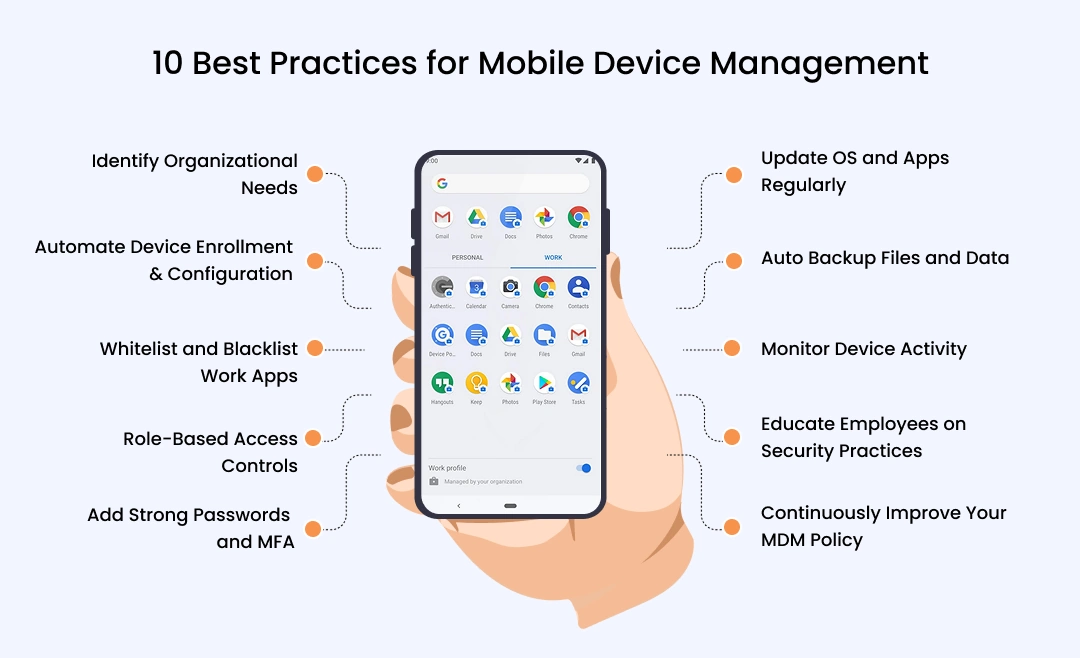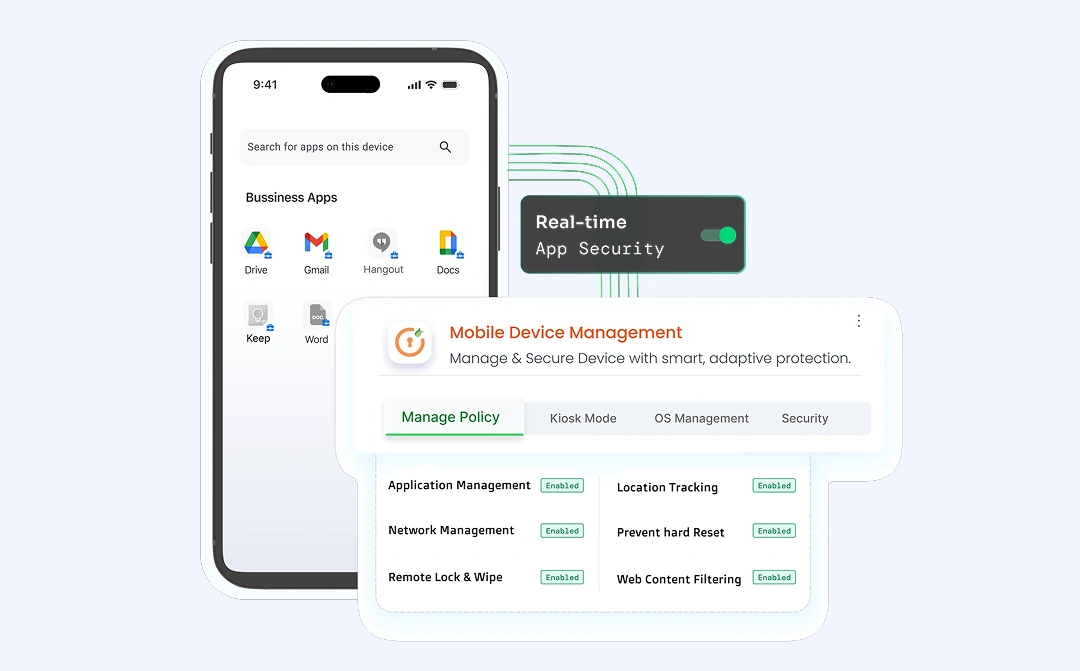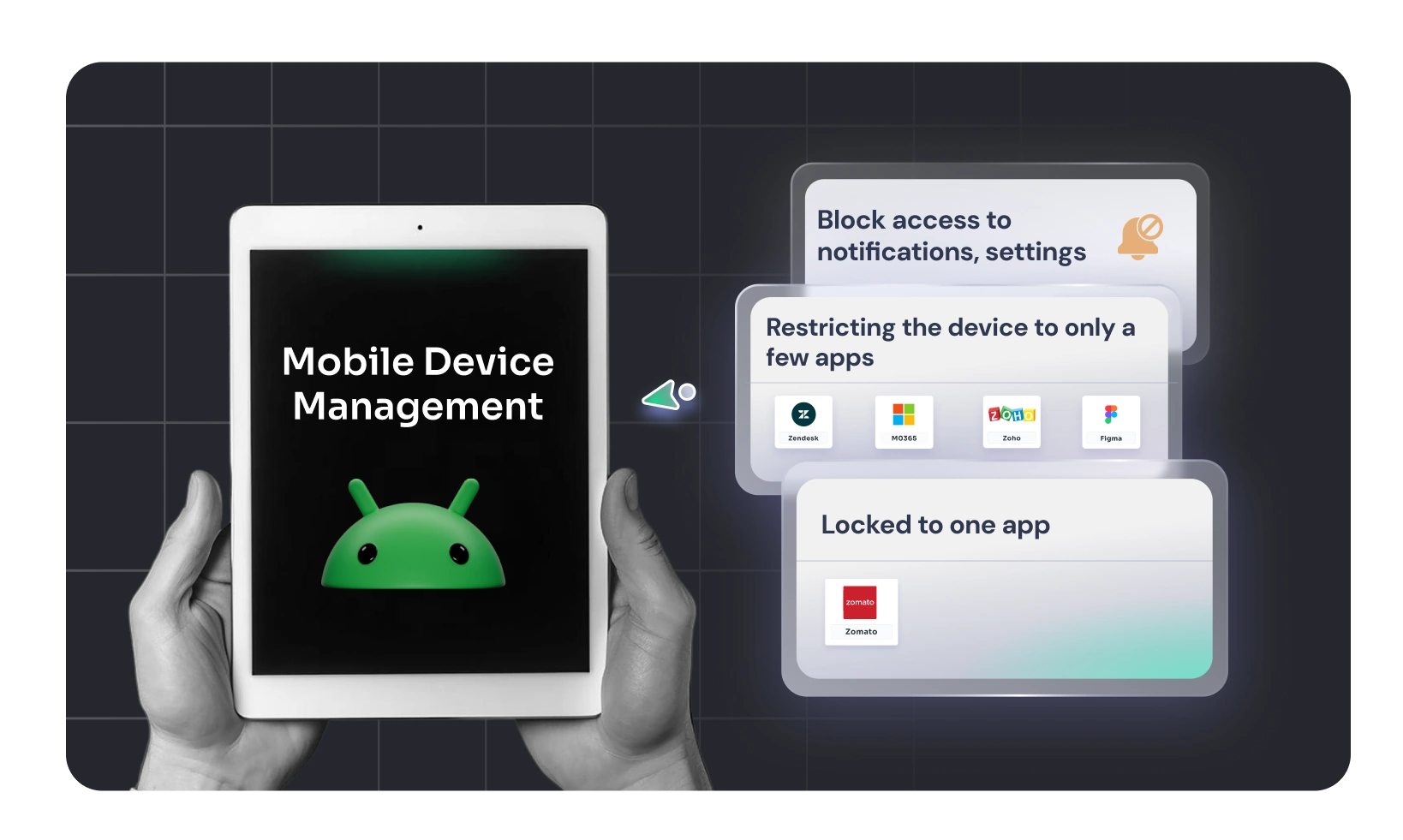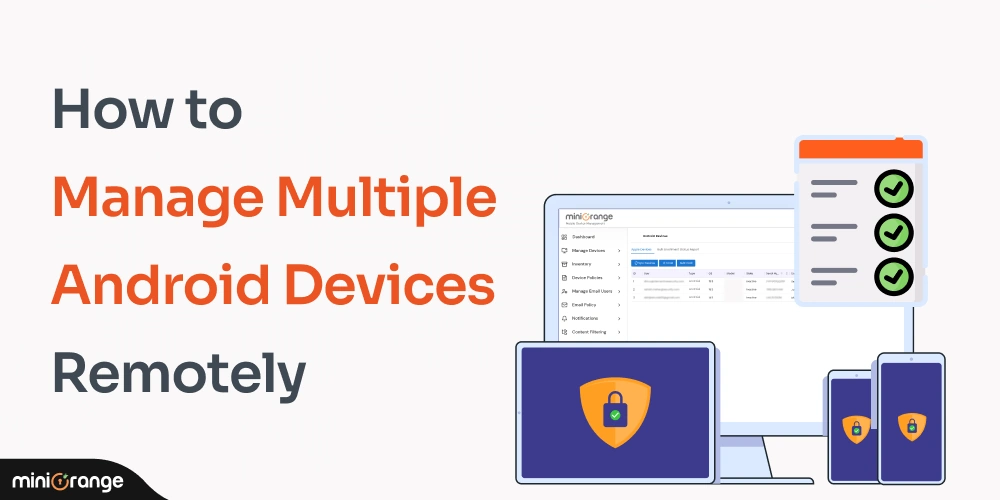Every modern business relies on mobile devices — from smartphones to laptops — to get work done anywhere. But with flexibility comes risk. Lost, stolen, or hacked devices can expose sensitive company data, disrupt operations, and even result in compliance penalties.
It gets worse: an Imprivata survey found 54% of organizations faced a data breach from misuse of mobile devices, with the most expensive case costing over $2.2 million.
This isn't just about IT — it's about revenue, compliance, and reputation. That's why following mobile device management (MDM) best practices is non-negotiable.
In this article, we'll break down 10 actionable practices that:
- Strengthen work device security
- Improve business compliance
- Simplify IT oversight through MDM solutions.
- Boost ROI from your MDM investment
10 Best Practices for Mobile Device Management (MDM)
Implementing MDM more than just installing software, it requires a balanced approach to security, productivity, and user experience. Follow these best practices to build a strong MDM strategy that protects your business.

1. Identify Organizational Needs Before Rolling Out MDM
Before deploying any MDM software, take time to assess your organization's needs.
- What devices and operating systems do you need to support?
- Which departments require stricter security?
Answering these questions helps shape a mobile device management policy that fits your business instead of forcing employees into a one-size-fits-all solution.
2. Automate Device Enrollment and Configuration
Manual setup is error-prone and time-consuming. The right MDM software allows IT teams to automate device enrollment, apply default configurations, and push updates instantly. This saves time and ensures every device complies with company standards from day one.
3. Whitelist and Blacklist Work Apps
Unapproved apps can introduce malware or create compliance risks. Use MDM software to whitelist trusted apps and blacklist risky ones. Regularly review and update these lists to align with changing business needs and security standards.
4. Limit Access with Role-Based Access Controls
Not every employee needs access to every system. Implement mobile device management policy best practices like role-based access controls (RBAC). Give employees access that suits their role. This limits damage if credentials are compromised.
5. Add Strong Passwords and Multi-Factor Authentication (MFA)
A Check Point survey found that only 38% of organizations use dedicated mobile security tools beyond MDM, which leaves many relying on passwords alone. Embed strong password policies and pair them with MFA across all mobile devices. This step is one of the most effective mobile device management security best practices for reducing unauthorized access.
6. Update OS and Apps Regularly
Running outdated software is one of the biggest risks. Hackers often target old vulnerabilities that remain unfixed. One of the core MDM security best practices is to enforce timely update of OS and apps, ensuring devices stay protected against the latest data threats.
7. Auto Backup Files and Data
Human error, device loss, or cyberattacks can all result in lost data. To reduce downtime, implement automated backups as part of your MDM best practices. Regular backups ensure critical business files can be restored quickly when needed.
8. Monitor Device Activity in Real Time
IT teams should continuously monitor mobile devices for suspicious activity, unauthorized access and logins, or unusual data transfers. Real-time monitoring enables quick responses to potential threats before they escalate.
9. Educate Employees on Security Practices
Even the best MDM security best practices can fail if employees aren't trained. Provide regular security awareness sessions covering phishing risks, safe app usage, and reporting suspicious behavior.
10. Continuously Improve Your MDM Policy
Threats evolve, and so should your strategy. Make it a habit to review your mobile device management policy best practices quarterly. Update policies, impose strict access rules, and explore new features in MDM software to keep your defense strong.
Perfect MDM solution with miniOrange
Protecting mobile devices doesn't have to be complicated. With miniOrange MDM solution, you get an all-in-one platform that keeps every device secure, compliant, and easy to manage.
Here's what you can do from day one with miniOrange:
- Automate device onboarding and push updates instantly
- Enforce security policies like MFA, app whitelisting/blacklisting, and role-based access
- Track devices in real time and stop threats before they escalate
- Simplify compliance reporting with automated checks

While other tools add complexity, miniOrange MDM is built to save IT teams time and keep your workforce productive — without compromising security.





Leave a Comment